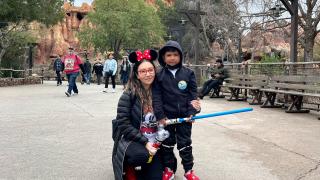“Can you do Spiderman?” the visitor asks.
Like a shot, 6-year-old Julian “Juju” Castaneda Figueroa strikes the classic pose, crouched low, arm extended, head cocked sideways with eyes intensely focused forward. Superhero stuff.
And you know, it’s not too much of a stretch to give this cuddly, fidgety, always-in-motion first-grader the superhero label. Let him tell you why.
“I want to be the fastest runner in my class,” he says. “Sometimes I get tired. But I’m still faster than all the kindergarten kids. Know why? Because I have 3,000 boosters inside me!”
Out of the mouths of babes.
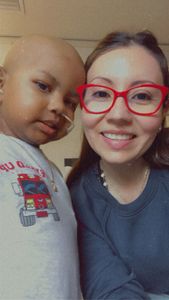
He doesn’t really remember what happened to him. If there’s a negative memory, it’s all those needle biopsies, checking his bone marrow. “I don’t like the pokes,” he says.
Mom, on the other hand, does remember. It is difficult for Nancy Figueroa to retell, without a few tears, how she and the little boy she’s raising alone in Compton, California, endured a sudden, life-threatening diagnosis, chemotherapy that didn’t work, CAR T immunotherapy that did, plus one stem cell transplant, then another. All before Juju’s fourth birthday.
Figueroa said her son was a perfectly normal, healthy baby with no significant problems until age 2. That’s when everything changed, seemingly overnight, on May 9, 2019.
“He woke up early, like 4 a.m.,” she recalled. “He was crying and complaining about pain in his knee. He was walking with a limp.”
She rushed Juju to the emergency room. X-rays and an ultrasound were normal. His bloodwork was not.
“The doctor sits down next to me,” said Figueroa, “and says, ‘Your son has leukemia.’
“I didn’t get it at first. Cancer? What? I didn’t understand. Then the doctor walks away and it hits me. I started crying. I called my mother, and she’s crying. Then I called Juju’s father, and he starts to cry.”
An Unexpected Childhood Leukemia Diagnosis
Juju’s diagnosis was acute lymphoblastic leukemia (ALL), the most common childhood cancer, with some 2,500 new cases each year. ALL in children is highly treatable, with up to a 90% survival rate. However, some cases — like Juju’s — are classified as “high risk” for a number of reasons, including the patient’s age and their white blood cell count at the time of diagnosis.
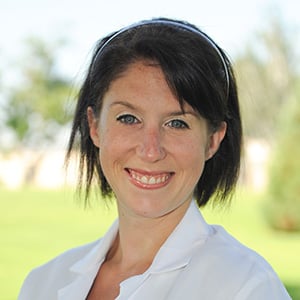
Most children with ALL respond well to chemotherapy. High-risk patients can also be cured, but they require more aggressive chemotherapy. Juju’s cancer stubbornly resisted the drugs. After switching his treatments four times without success, doctors referred Juju and his mom to City of Hope, where tens of thousands of patients have received lifesaving bone marrow and stem cell transplants.
Their new doctor tried to be reassuring as Figueroa and her son sat in the examination room.
“Nothing really calms them,” said Nicole A. Karras, M.D., a pediatric hematologist-oncologist and associate clinical professor at City of Hope Children’s Cancer Center. “You just explain, ‘This is what we can do.’ The fact is, in the last 10 years, we’re developed so many new therapies. And every year we learn so much more from kids like Julian.”
Cord Blood Transplant
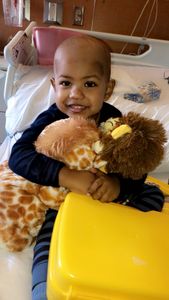
To treat Juju, Karras recommended transplanting stem cells derived from stored umbilical cord blood obtained from the national cord blood bank. This method, in use since 1988, can sometimes be preferable to bone marrow transplants. A precise match is not necessary. Cord blood stem cells generally haven’t been exposed to infections yet, which means they haven’t developed immune reactions, so they are less likely to trigger graft-versus-host disease.
There are drawbacks, though. Cord blood units contain a lower volume of stem cells and they engraft more slowly than bone marrow cells, leaving the patient vulnerable to infection for a longer period of time.
In Juju’s case, no family member could provide an exact match, but a search turned up cord blood from a nonrelative that matched 99%. “In certain circumstances, cord blood can be better than haplo” — a partial bone marrow match from a relative — Karras said.
With any transplant, the long preparation process can be daunting, even frightening. Juju needed intense chemotherapy and radiation to destroy his diseased bone marrow before the transplant could happen. The process was rough on mother and son.
“I didn’t know what was going on,” said Figueroa. “I couldn’t help him, and it was so hard to see him there, going through those changes. Especially the radiation. It burned his gums, his lips, his skin. He couldn’t eat. He was crying. It made me nervous and scared.
“But I just wanted him to be healthy. I felt, whatever makes him better, do it.”
The cord blood transplant itself, which took place in late 2019, went so smoothly, said Figueroa, that she remembers thinking, “That’s it?” And for a while, Juju did get better, which made for a happy Thanksgiving and Christmas season. But by June 2020, there were signs that the cancer had returned.
“He developed bruises on his back,” said Figueroa, “and he didn’t want to eat much.” They went for tests, “but I already knew.”
“I was so angry and upset,” she continued, tears flowing now. “He was just 3 ½.” She prayed, but “I didn’t want to believe anymore.”
But Karras had a plan. She would use revolutionary CAR T cell therapy to once again bring Juju into remission, clearing the way for a second transplant, if necessary.
CAR T cell treatment works by re-engineering a patient’s own immune cells to seek out and destroy cancer. City of Hope researchers have led the way in CAR T cell development.
CAR T Cell Therapy for Relapsed ALL
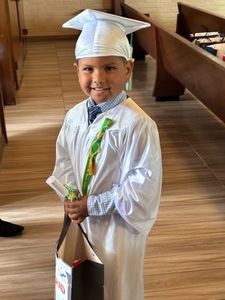
Considered an experimental process just a few years ago, CAR T cell therapy is now the standard of care for a variety of cancers, including relapsed ALL. There are six commercially available CAR T products including one — Kymriah — specifically for children.
Juju’s CAR T treatment did what it was supposed to do. He went into remission, with minimal side effects. Karras performed another bone marrow biopsy to confirm all the cancer was gone. The test showed no active cancer cells, but also indicated a possibility that the malignancy could return. The CAR T treatment alone would not be enough. But a second transplant might provide a cure.
This time, Karras determined that Juju’s father would be the best available donor. Figueroa admits this was “complicated” — the couple is no longer together — but she also insisted “it wasn’t hard to ask him” and he did come through, agreeing to donate.
This was a fraught time for Juju and his mom. The failure of the first transplant and the need to go through the process all over again took an emotional toll. Karras and many others at City of Hope did their best to help.
“Juju got really great care, and it was a team effort,” said Karras. “Before the second transplant, he and his mom were really traumatized and fearful. We gave them a lot of help so they could get better adjusted.”
The effort was not lost on Mom.
“Everyone at City of Hope is amazing,” Figueroa said. “Dr. Karras did everything that had to be done. She’s one of the greatest doctors I’ve ever met, and I trust her completely.”
The second transplant happened in early 2021. Juju endured a series of difficulties in the ensuing weeks: His liver and kidneys were not functioning properly. It was necessary to place him in intensive care until the transplanted cells began to work and his systems returned to normal.
After that, Juju “kept getting better and better!” said Mom, smiling. And now, more than two years later, “He’s so good, I sometimes forget how sick he was. I have to look at the pictures to remind myself.”
And how does Juju, with all those CAR T and stem cell “boosters” purring away inside him, feel about the folks who put them there?
“City of Hope is great,” he says.
Mom agrees, and adds one bit of advice to others facing similar challenges:
“Never lose hope.”
At City of Hope Children’s Cancer Center, our expert providers are dedicated to delivering world-class, personalized care for children, adolescents and young adults. Each patient is cared for by a multidisciplinary team of oncologists, hematologists, surgeons, radiation therapists, pathologists and supportive care staff, including child life specialists. Our team has access to leading-edge treatments, including our world-renowned stem cell and bone marrow transplantation programs and the latest clinical trials. Our specialists work together to develop a unique, targeted treatment plan for every patient while providing family support. Continuing care into adulthood for survivors, our Childhood, Adolescent and Young Adult Survivorship Program provides specialized follow-up care for patients who have completed treatment for cancer or a similar illness that was diagnosed before 40 years of age.
